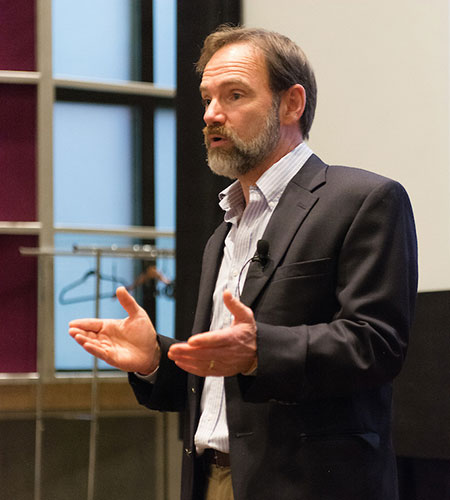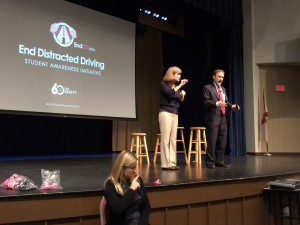 Several months ago when I agreed to do a distracted driving presentation at the Florida School for the Deaf and Blind, I must admit that I had some anxiety about it. I had never really known anyone who was deaf and knew nothing about the deaf culture; I wanted to make certain that I could do an effective presentation. Lauren Fox, an English teacher at the school, reached out to me and was so helpful in answering all of my questions.
Several months ago when I agreed to do a distracted driving presentation at the Florida School for the Deaf and Blind, I must admit that I had some anxiety about it. I had never really known anyone who was deaf and knew nothing about the deaf culture; I wanted to make certain that I could do an effective presentation. Lauren Fox, an English teacher at the school, reached out to me and was so helpful in answering all of my questions.
I learned that Lauren had a personal and tragic connection to distracted driving. Her brother Andrew Fox, a Virginia State Policeman, was killed by a distracted driver in 2012 while directing traffic. Efforts to increase the penalties for drivers who strike emergency personnel are ongoing in the Virginia legislature and the proposed law is called “Andrew’s Law”, in his honor.
Lauren told me that many in the deaf community will sign when they drive, in addition to looking at their cell phones. Lauren wanted her students to have an opportunity to learn about distracted driving and decide if their behaviors needed to change. The Florida School for the Deaf and Blind captioned all of our presentation videos and supplied a number of sign language interpreters for the presentation. The National Association for the Deaf (NAD) provided me with information about a PSA titled “Ghost” that had been produced by the California School for the Deaf in Fremont, which we incorporated into our presentation.
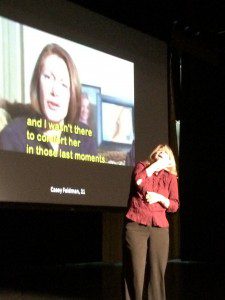
In preparing for the presentation, I learned some things about deaf drivers which frankly, startled me. I had thought that lack of hearing would make driving more difficult and more dangerous. But, I discovered that in some ways deaf drivers may be more attentive than hearing drivers. Studies have shown that deaf drivers can have better peripheral vision, scan more completely and detect hazards better than hearing drivers.I also learned something about the struggles that the deaf have had with respect to earning the right to have driving privileges in all 50 states and, that even today, many countries deny the deaf the right to drive, even though there is no evidence to suggest that a lack of hearing translates into a higher crash risk. The deaf have also had to fight for the right to have equal opportunities for employment as drivers, including most notably against UPS.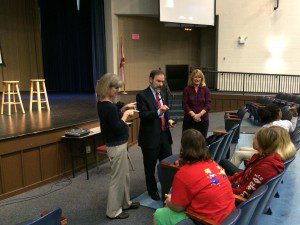
I was joined by Wayne Hogan and Leslie Goller, attorneys from Jacksonville, Florida, who have given the EndDD.org presentation to thousands of teens in the area.
During the presentation students and staff readily admitted signing while driving and turning to see the faces and lips of passengers as well as using cell phones for texting and e-mails. But those in attendance were very much interested in finding ways to be safer, more engaged drivers. Part of the presentation was devoted to learning effective ways to speak up when driven by distracted drivers. The students role-played and practiced passenger intervention skills. The focus of the role play was what to do when your driver was texting or signing and taking their eyes off of the road.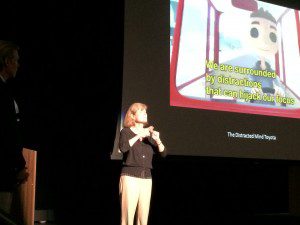
The presentation was as interactive as any I have ever given. I found that I was listening more than I do in other presentations (a very good thing) and that the 90 minutes we had flew by. I was struck by the enthusiasm, energy, interest and passion of the students. After the presentation many students came up to me wanting to share and express their condolences for Casey’s death. I was moved to tears by their compassionate words and when honored by being given a “sign name,” a unique way to identify me in sign language – a combination of the letter “J” and a movement at the wrist to signify the wristbands that I had given the students.
This was a unique and wonderful experience for me. I was blessed to have had the opportunity to meet so many incredibly sensitive and passionate young people, learn something about the deaf community and the challenges that community faces, and to do so while remembering Casey.
With the captioned videos I also hope that we can present to more schools for the deaf in the future.
Closed Caption Videos Used in the Presentation Include
Distracted driving can affect all of us, including the deaf. Thank you to the Florida School for the Deaf for captioning these videos so that they can now be used by others in presentations with deaf drivers.

